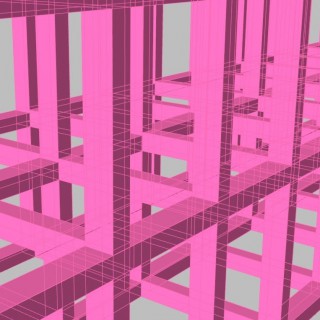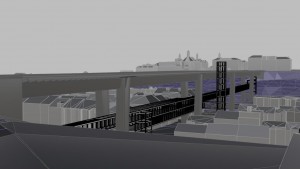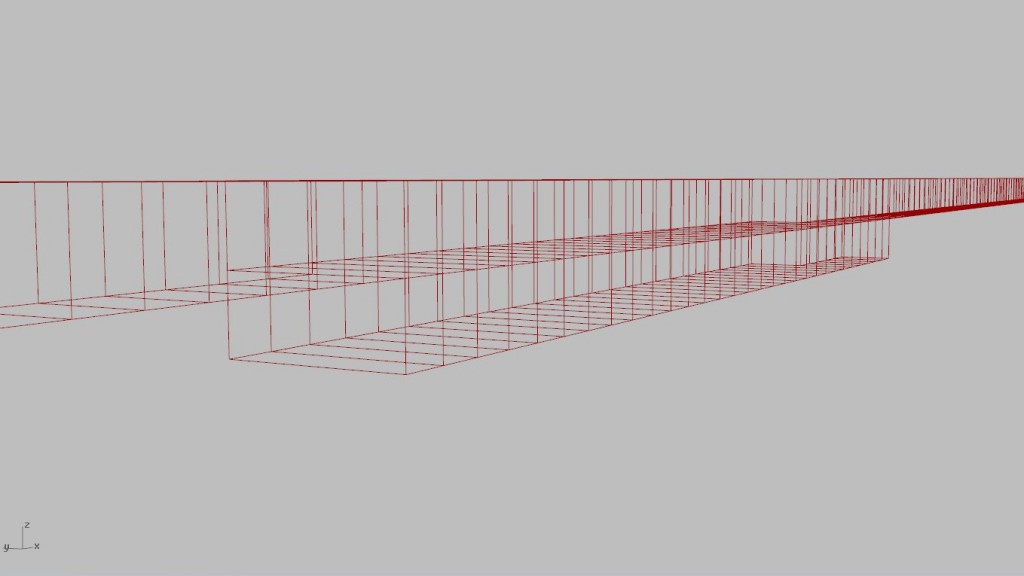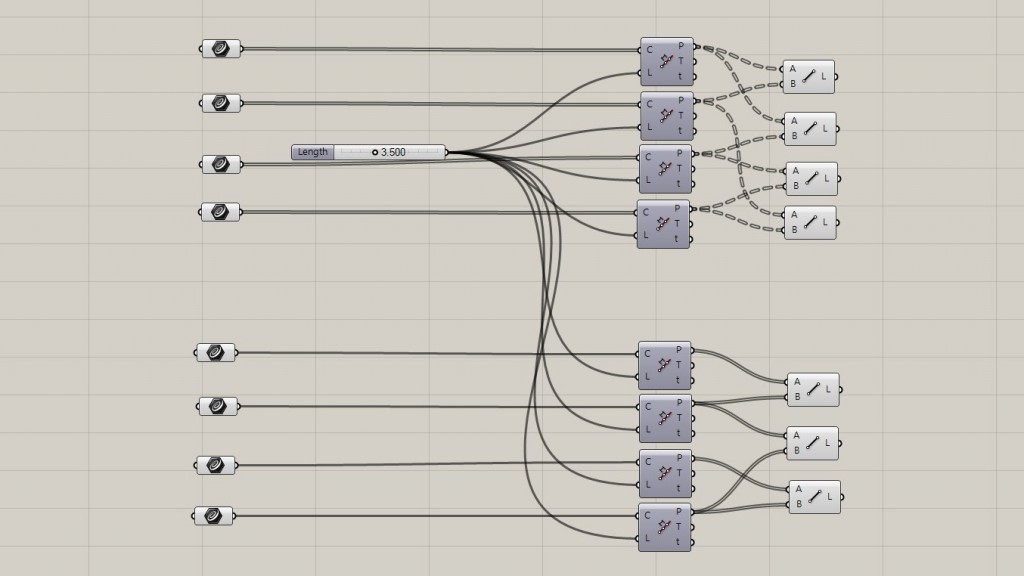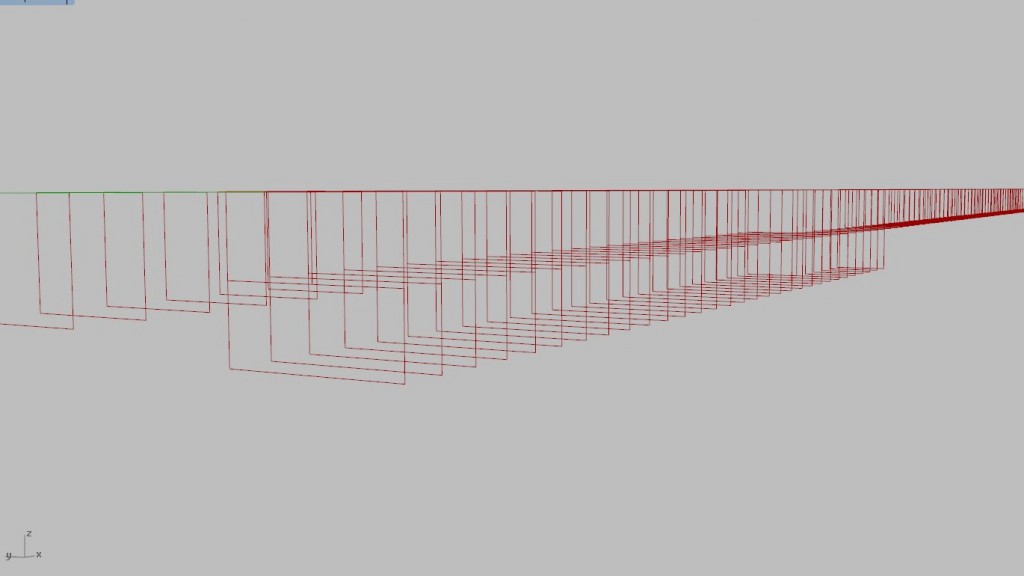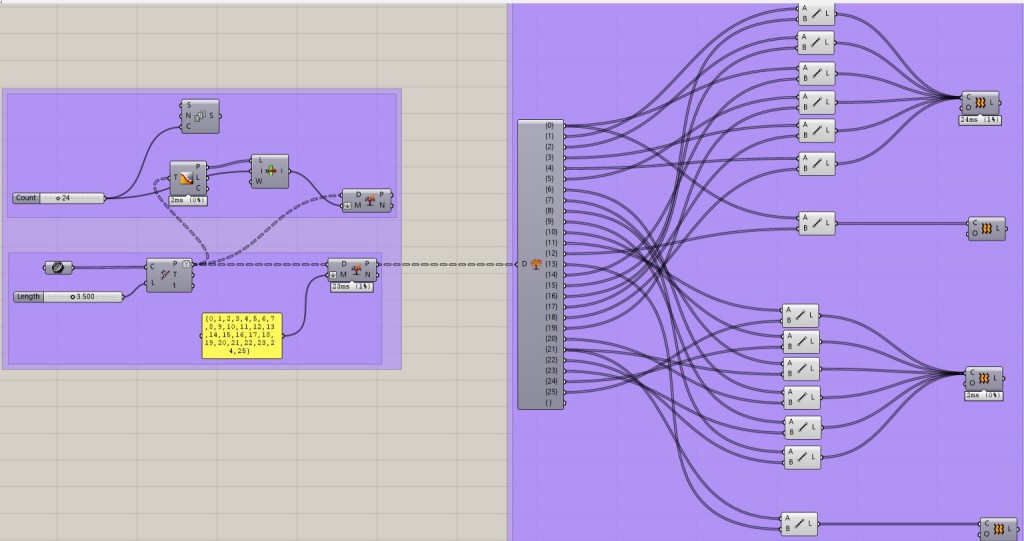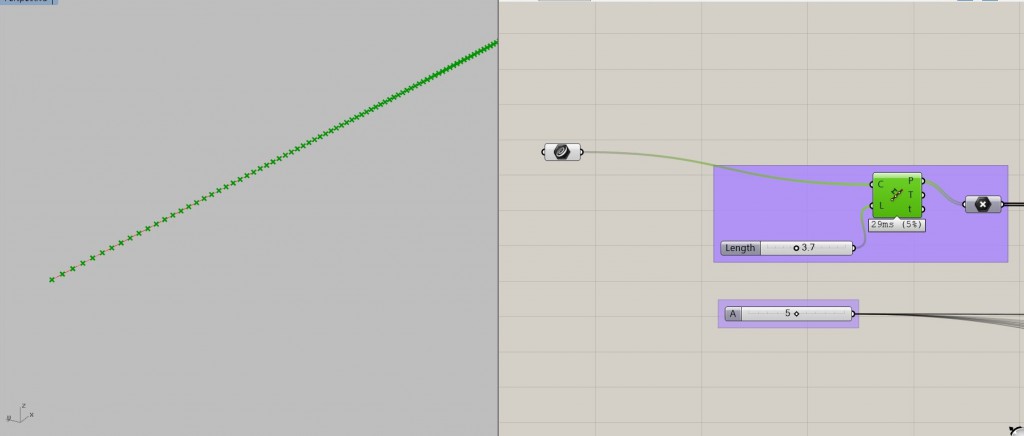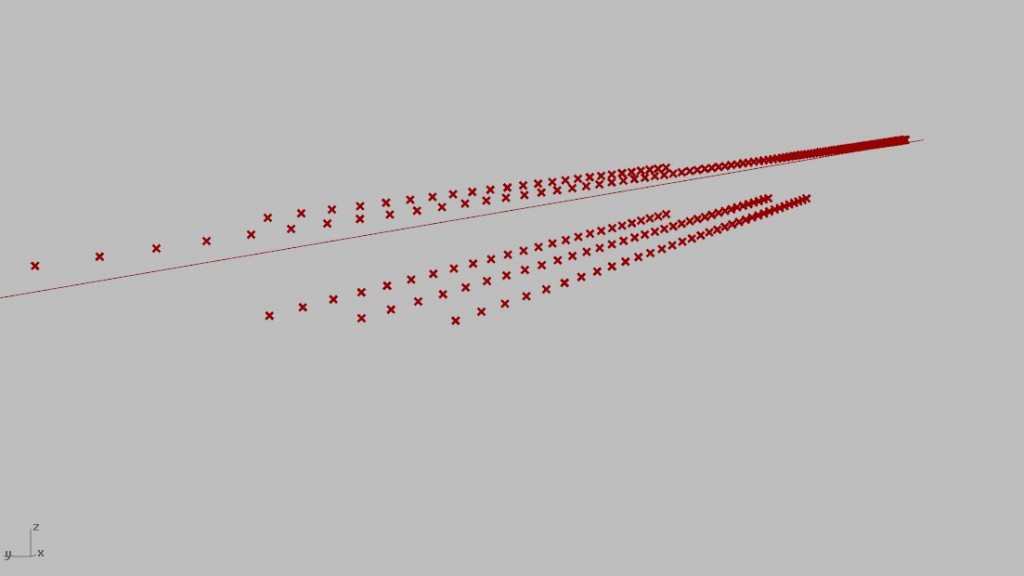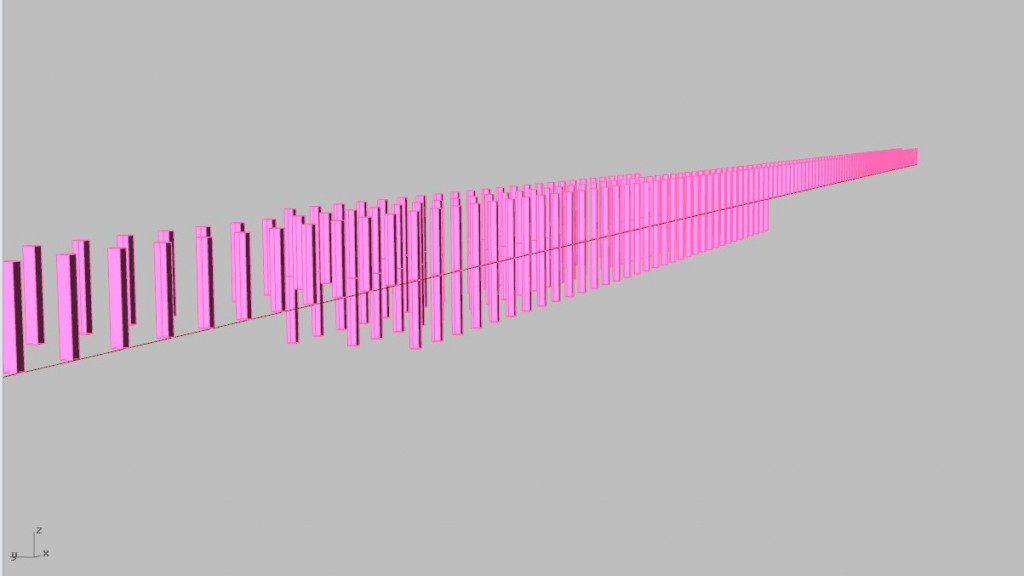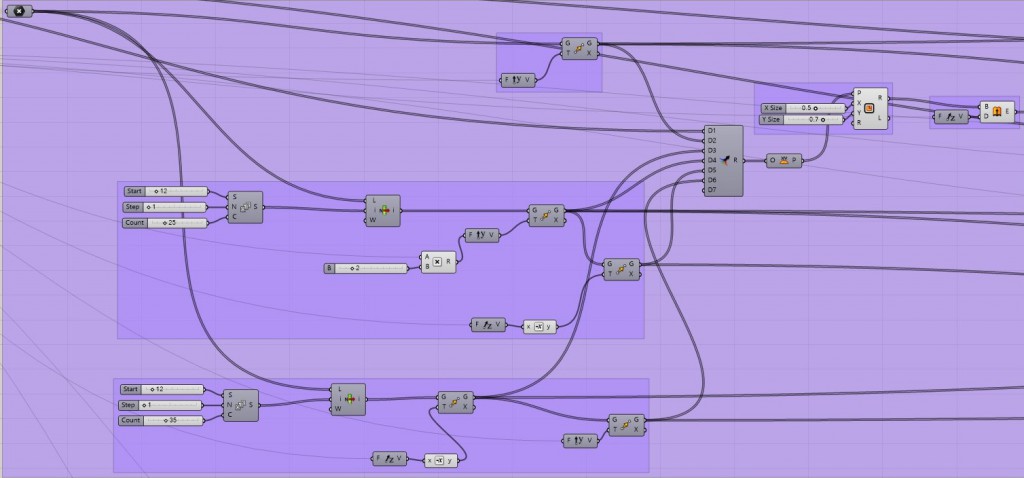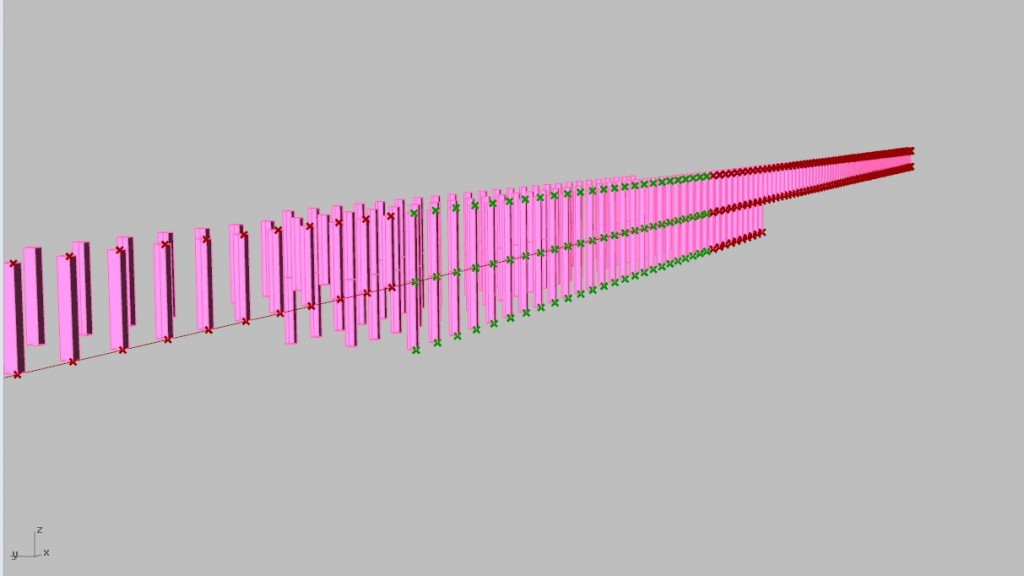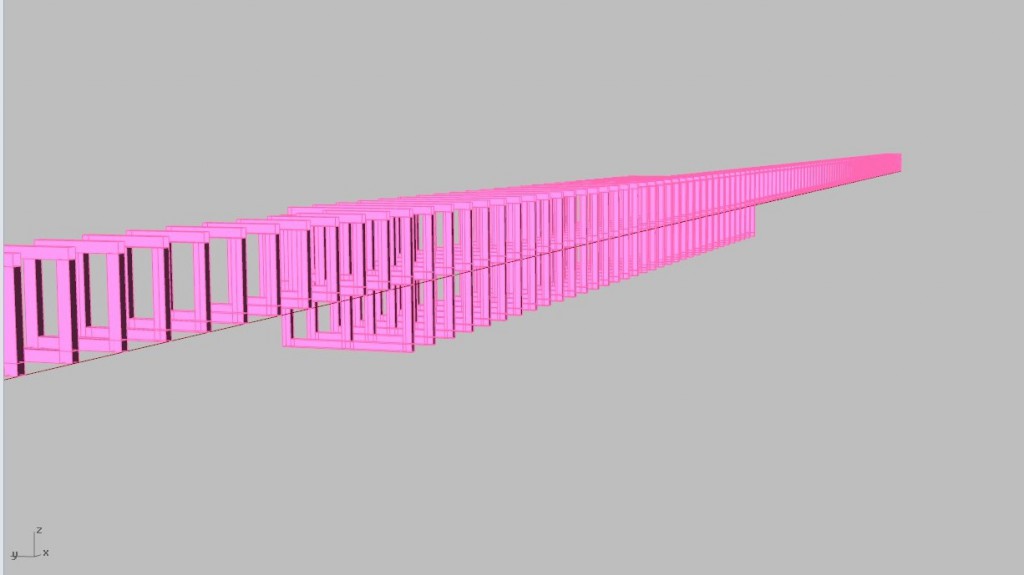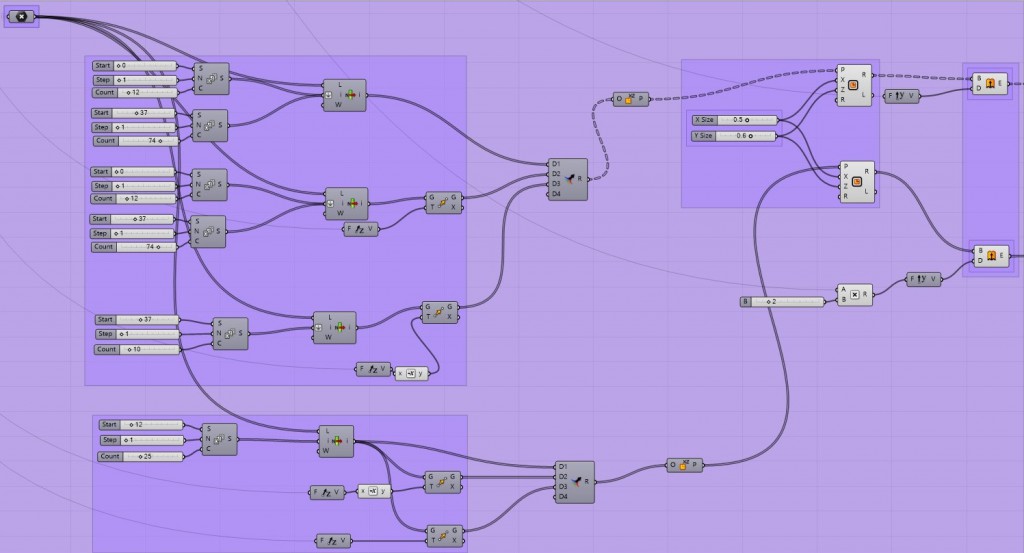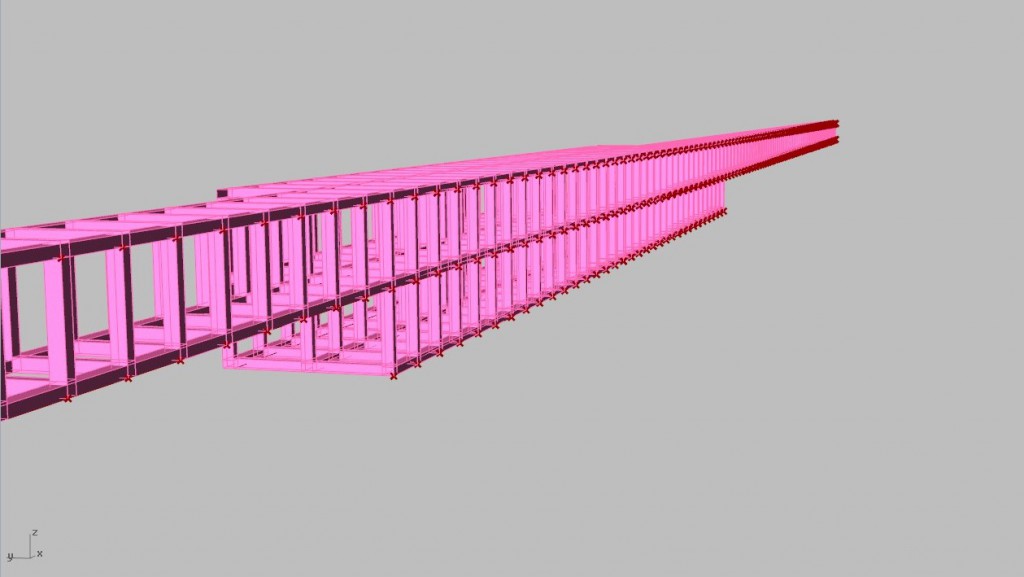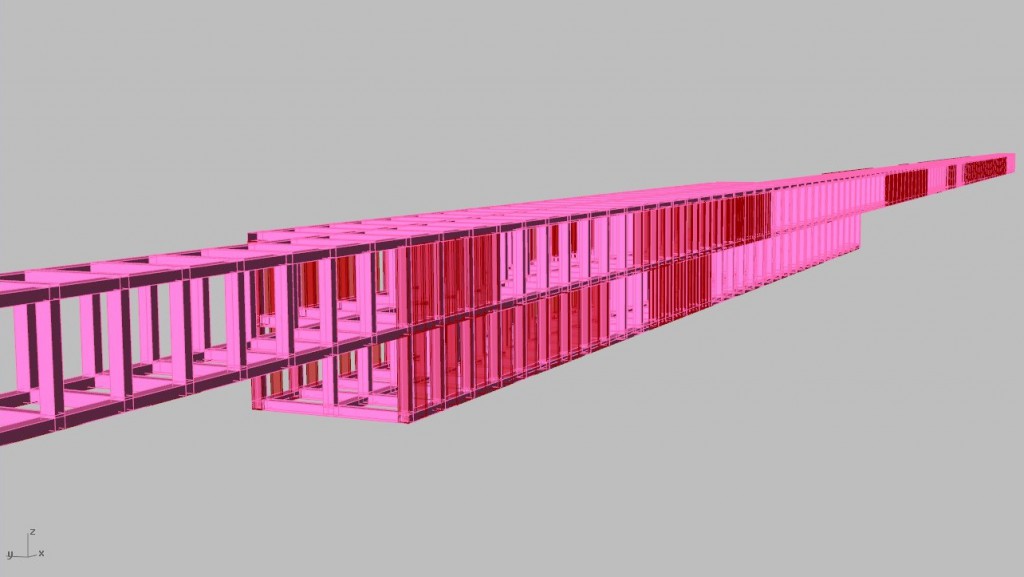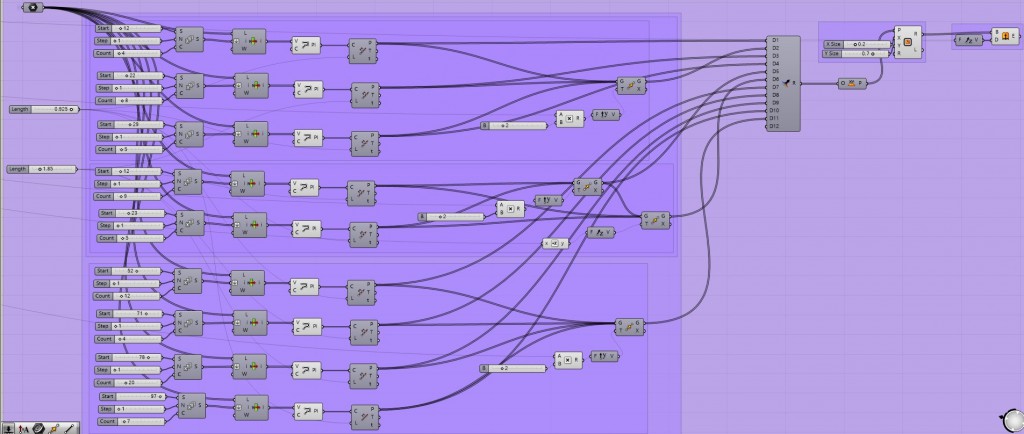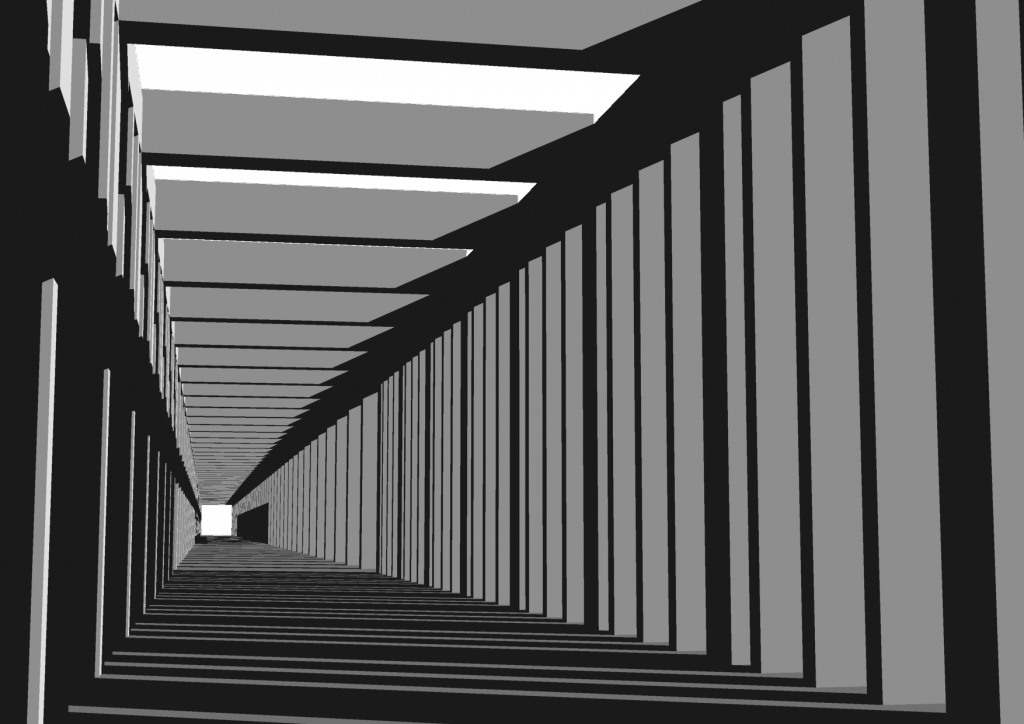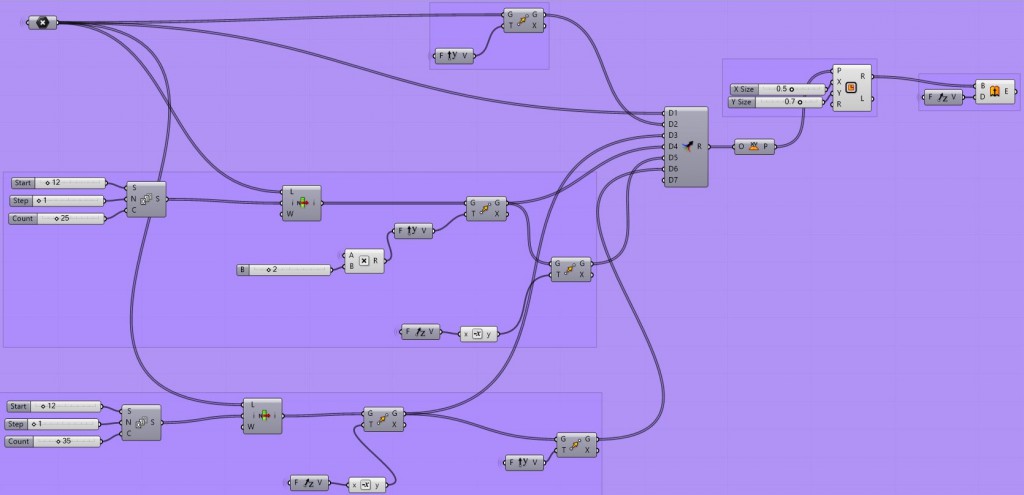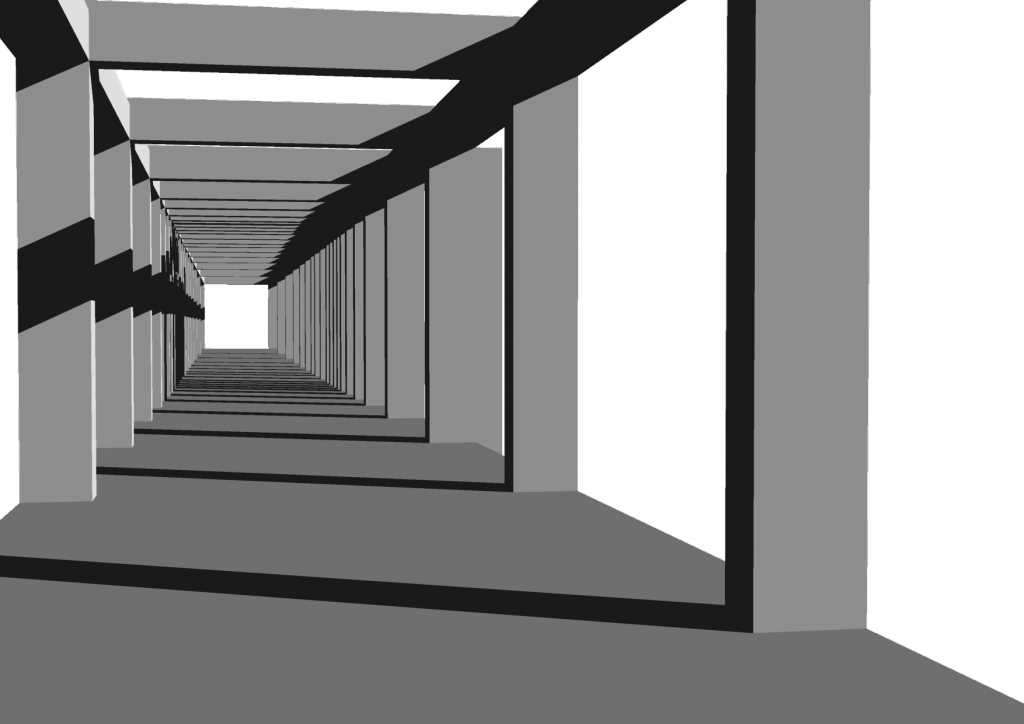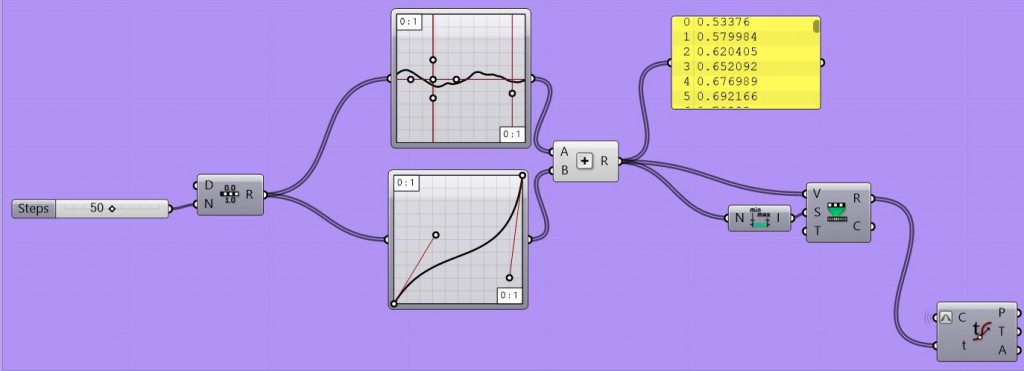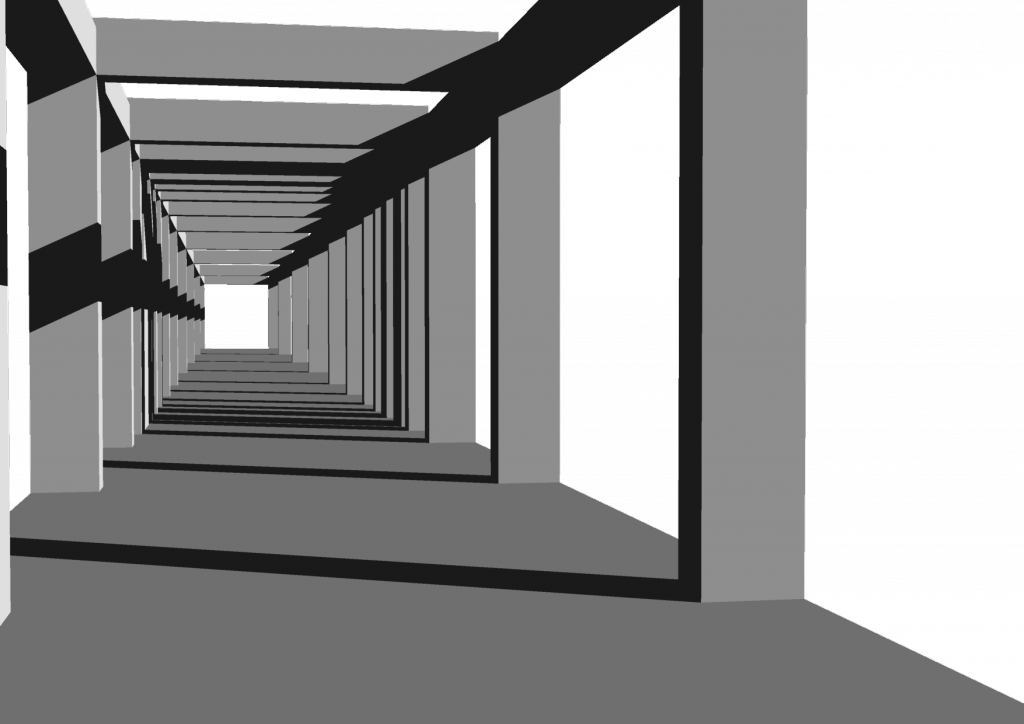PEDESTRIAN BRIDGE
The aim of the project consist on connecting Vvyšehrad with Folimanca with a pedestrian bridge. It is a three-dimensional truss that plays with the light. The structure expands for fitting the cultural uses intended for the local population. There are different areas according with the type of light that enters in the bridge.
Originally, the project follows the rhythm of the existing bridge. The truss is going to be shown in grasshopper as a very complicated structure due to the different distances between the structure of the bridge.
Thus, it is going to be shown the process of simplification using grasshopper.
1. CASE NUMER ONE
The first approach uses different curve input components for each part of the bridge.
2. CASE NUMBER TWO
The next approach just uses one curve input component that includes multiple lines. To handle all these curves, explode tree allows you to order every one, and split tree to get to know the curve that is selected. Even so, the programme works with too many lines. It is not very efficient to work with this many connections.
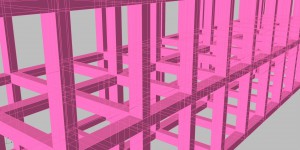 After this first aproaches, we concluded that we are not leveraging the possibilities that the programme offers. Grasshopper presents some facilities to play with the rhythm. Because of that, the work will be focus on the truss structure. The distances and rhythm of the existing bridge will be avoided because they make the design very strict. For it, different possibilities are going to be presented. This will show how the spaces will change as the light is introduced differently in the bridge.
After this first aproaches, we concluded that we are not leveraging the possibilities that the programme offers. Grasshopper presents some facilities to play with the rhythm. Because of that, the work will be focus on the truss structure. The distances and rhythm of the existing bridge will be avoided because they make the design very strict. For it, different possibilities are going to be presented. This will show how the spaces will change as the light is introduced differently in the bridge.
3. CASE NUMBER THREE
On this approach we follow just one module along the main structure. This makes the light equal in all areas along the strucutre. To differentiate the different areas and being able to create spaces with a different type of light, a secondary structure is used. It is based on a half or a quarter of the module of the main one. To differentiate the different zones and create spaces with different light a second structure is used.
A. LINE BASE
This main line and its divisions will be the base of the project. We still conserve the main rhythm of the bridge (3, 7 m) and the height of the truss will be 5m. This two numbers will be constant along the design and they will form the main structure.
B. COLUMNS
1-All the lines and divitions that the truss will follow are formed. It is important to say that the structure expands along the Y and Z plane.
2-The section of the columns are extruded along the lines and its divisions. It creates a rhythm that will be the main component for the new design.
C. BEAMS
1-The lines that are already made, they are divided in different parts so as to separate them in two groups. They are formed with the different length of beams that the truss will have.
2-As the groups are formed, the beams are extruded with the corresponding lengh to their group (one or double the module).
D. EDGE BEAM
A perpendicular section to the base line is extruded. The edge beam join all the beams and coloums of the structure.
E. SECONDARY STRUCTURE
The main structure is divided with a secondary structure that allows having different incoming light. The space between two coloums of the main structure is reduced to a half or a quarter with this structure.
On this approach, only the main structure will be used. The different gaps along the truss will be apparently random, but they will be controled with a function. They do not follow just a proportional partitions, the rythm changes. Using the graph and changing its values the gaps can be controled as it is wanted.
To create the truss we follow the previous steps : columns, beams and edge beams.
5. CASE NUMBER FOUR
Following the previous example, we will add another function that brings a greater variety of gaps along the truss. It is important to keep the range of numbers between 0 and 1, so a domain is created and the numbers are remaped into this new domain.
After that, the process already mentioned is followed again: columns, beams and edge beams.
